Why SQL Will Remain the Data Scientist’s Best Friend
KDnuggets
JULY 15, 2022
Machine learning, big data analytics or AI may steal the headlines, but if you want to hone a smart, strategic skill that can elevate your career, look no further than SQL.
This site uses cookies to improve your experience. To help us insure we adhere to various privacy regulations, please select your country/region of residence. If you do not select a country, we will assume you are from the United States. Select your Cookie Settings or view our Privacy Policy and Terms of Use.
Cookies and similar technologies are used on this website for proper function of the website, for tracking performance analytics and for marketing purposes. We and some of our third-party providers may use cookie data for various purposes. Please review the cookie settings below and choose your preference.
Used for the proper function of the website
Used for monitoring website traffic and interactions
Cookies and similar technologies are used on this website for proper function of the website, for tracking performance analytics and for marketing purposes. We and some of our third-party providers may use cookie data for various purposes. Please review the cookie settings below and choose your preference.

KDnuggets
JULY 15, 2022
Machine learning, big data analytics or AI may steal the headlines, but if you want to hone a smart, strategic skill that can elevate your career, look no further than SQL.

Analytics Vidhya
APRIL 12, 2022
Introduction In this article, we are going to cover Spark SQL in Python. In the last article, we have already introduced Spark and its work and its role in Big data. The post End-to-End Beginners Guide on Spark SQL in Python appeared first on Analytics Vidhya. If you haven’t checked it yet, please go to this link.
This site is protected by reCAPTCHA and the Google Privacy Policy and Terms of Service apply.

Analytics Vidhya
SEPTEMBER 28, 2022
This article was published as a part of the Data Science Blogathon. Introduction to Data Warehouse SQL Data Warehouse is also a cloud-based data warehouse that uses Massively Parallel Processing (MPP) to run complex queries across petabytes of data rapidly. Import big […].

Analytics Vidhya
MAY 22, 2021
ArticleVideo Book This article was published as a part of the Data Science Blogathon Introduction Getting complete and high-performance data is not always the case. The post How to Fetch Data using API and SQL databases! appeared first on Analytics Vidhya.

Analytics Vidhya
AUGUST 30, 2022
Whether you’re a small company or a trillion-dollar giant, data makes the decision. But as data ecosystems become more complex, it’s important to have the right tools for the […]. The post Learn Presto & Startburst for Big Data Analysis appeared first on Analytics Vidhya.
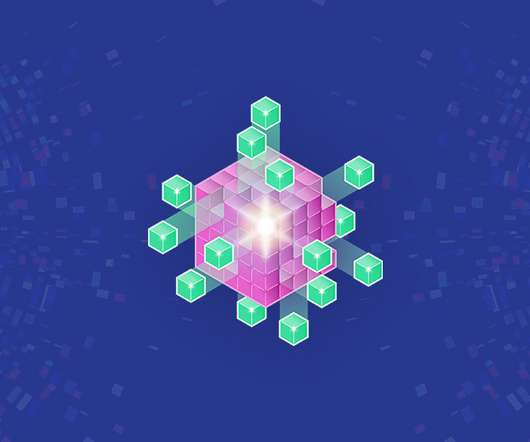
Analytics Vidhya
JULY 19, 2020
Introduction Anything and everything related to data in the 21st century have become of prime relevance. The post 24 Commonly used SQL Functions for Data Analysis tasks appeared first on Analytics Vidhya. And one of the key skills for any.
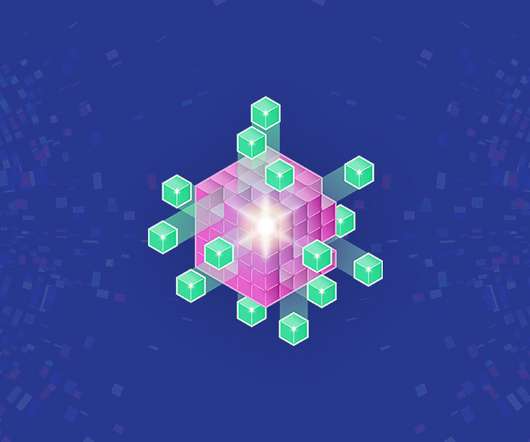
Analytics Vidhya
AUGUST 30, 2021
This article was published as a part of the Data Science Blogathon Introduction Spark is an analytics engine that is used by data scientists all over the world for Big Data Processing. It is built on top of Hadoop and can process batch as well as streaming data.

Analytics Vidhya
MARCH 7, 2023
CTE is one of the most powerful tools of SQL (Structured Query Language), and it also helps to clean the data. It is the concept of SQL (Structured Query Language) used to simplify coding and help to get the result as quickly as possible.
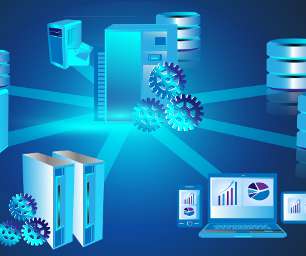
Analytics Vidhya
JUNE 28, 2022
. “Preponderance data opens doorways to complex and Avant analytics.” ” Introduction to SQL Queries Data is the premium product of the 21st century. Enterprises are focused on data stockpiling because more data leads to meticulous and calculated decision-making and opens more doors for business […].

Analytics Vidhya
JULY 12, 2023
Best Big Data Softwares - Apache Hadoop, Apache Spark, apache Kafka, Apache Storm, Apache Cassandra, Apache Hive, zoho & more.
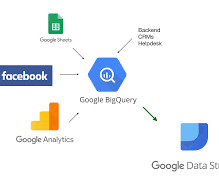
Analytics Vidhya
APRIL 1, 2023
Introduction Google Big Query is a secure, accessible, fully-manage, pay-as-you-go, server-less, multi-cloud data warehouse Platform as a Service (PaaS) service provided by Google Cloud Platform that helps to generate useful insights from big data that will help business stakeholders in effective decision-making.

KDnuggets
JULY 26, 2019
Education, coding, SQL, big data platforms, storytelling and more. These are the 13 skills you need to master to become a rockstar data scientist.

Analytics Vidhya
FEBRUARY 1, 2023
Introduction In this constantly growing technical era, big data is at its peak, with the need for a tool to import and export the data between RDBMS and Hadoop. Apache Sqoop stands for “SQL to Hadoop,” and is one such tool that transfers data between Hadoop(HIVE, HBASE, HDFS, etc.)

Data Science Dojo
JULY 24, 2023
The generation and accumulation of vast amounts of data have become a defining characteristic of our world. This data, often referred to as Big Data , encompasses information from various sources, including social media interactions, online transactions, sensor data, and more. databases), semi-structured data (e.g.,
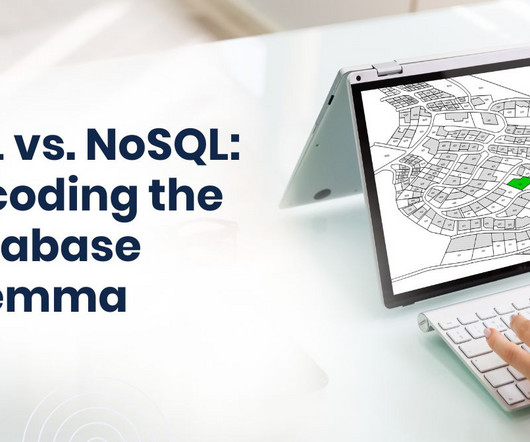
Data Science Dojo
JULY 12, 2023
Welcome to the world of databases, where the choice between SQL (Structured Query Language) and NoSQL (Not Only SQL) databases can be a significant decision. In this blog, we’ll explore the defining traits, benefits, use cases, and key factors to consider when choosing between SQL and NoSQL databases.

Data Science Dojo
JUNE 19, 2023
Organizations must become skilled in navigating vast amounts of data to extract valuable insights and make data-driven decisions in the era of big data analytics. Amidst the buzz surrounding big data technologies, one thing remains constant: the use of Relational Database Management Systems (RDBMS).
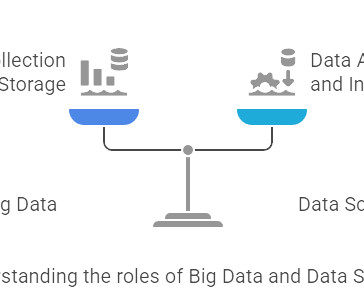
Pickl AI
APRIL 21, 2025
Summary: Big Data refers to the vast volumes of structured and unstructured data generated at high speed, requiring specialized tools for storage and processing. Data Science, on the other hand, uses scientific methods and algorithms to analyses this data, extract insights, and inform decisions.

KDnuggets
JANUARY 7, 2020
An estimated 8,650% growth of the volume of Data to 175 zetabytes from 2010 to 2025 has created an enormous need for Data Engineers to build an organization's big data platform to be fast, efficient and scalable.

Smart Data Collective
AUGUST 23, 2022
Are you running a company with a focus on big data? One survey showed that 32% of companies have a formal big data strategy. These companies tend to be far more profitable than businesses that do not utilize big data. This entails using SQL servers appropriately. You aren’t alone.

Analytics Vidhya
JANUARY 13, 2022
HQL or Hive Query Language is a simple yet powerful SQL like querying language which provides the users with the ability to perform data analytics on big datasets. Owing to its syntax similarity to SQL, HQL has been widely adopted among data engineers and can be learned quickly by people new to the world of […].

Analytics Vidhya
DECEMBER 2, 2020
Overview Get to know about the SQL Window Functions Understand what the Aggregate functions lack and why we need Window Functions in SQL. The post Window Functions – A Must-Know Topic for Data Engineers and Data Scientists appeared first on Analytics Vidhya.

Smart Data Collective
DECEMBER 21, 2021
Big data is a phrase that the industry coined in 1987 , but it took years before it became truly popular. By the time the name was a household term, big data was everywhere, and companies were seeking ways to store and use the data. Data scientists knew that big data could hold valuable insights.

Analytics Vidhya
JANUARY 24, 2023
According to Scalegrid’s 2019 database trends report, SQL is the most popular database form, with more than 60% of its use. MySQL is the most common SQL database, while MongoDB […] The post Understanding Neo4j Graph Databases: Purpose and Functionality appeared first on Analytics Vidhya.

Smart Data Collective
OCTOBER 20, 2020
Big data has led to some major breakthroughs for businesses all over the world. Last year, global organizations spent $180 billion on big data analytics. However, the benefits of big data can only be realized if data sets are properly organized. The benefits of data analytics are endless.

Smart Data Collective
JUNE 6, 2021
While you may think that you understand the desires of your customers and the growth rate of your company, data-driven decision making is considered a more effective way to reach your goals. The use of big data analytics is, therefore, worth considering—as well as the services that have come from this concept, such as Google BigQuery.
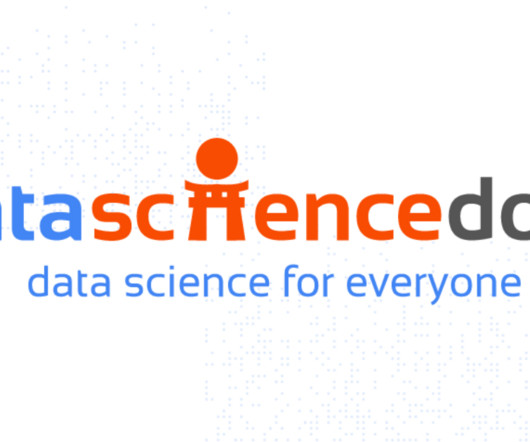
Data Science Dojo
OCTOBER 31, 2024
They work closely with database administrators to ensure data integrity, develop reporting tools, and conduct thorough analyses to inform business strategies. Their role is crucial in understanding the underlying data structures and how to leverage them for insights.

Smart Data Collective
AUGUST 4, 2022
A growing number of businesses are relying on big data technology to improve productivity and address some of their most pressing challenges. Global companies are projected to spend over $297 billion on big data by 2030. Data technology has proven to be remarkably helpful for many businesses. Problem Statement.

Analytics Vidhya
MAY 1, 2022
This article was published as a part of the Data Science Blogathon. Introduction Azure Synapse Analytics is a cloud-based service that combines the capabilities of enterprise data warehousing, big data, data integration, data visualization and dashboarding.

Smart Data Collective
JULY 20, 2021
Big data technology is incredibly important in modern business. One of the most important applications of big data is with building relationships with customers. These software tools rely on sophisticated big data algorithms and allow companies to boost their sales, business productivity and customer retention.

Smart Data Collective
AUGUST 4, 2022
A growing number of businesses are discovering the importance of big data. Thirty-two percent of businesses have a formal data strategy and this number is rising year after year. Unfortunately, they often have to deal with a variety of challenges when they manage their data. One of them is knowing how to backup your data.

Analytics Vidhya
JANUARY 17, 2023
Corporations across all industries have invested significantly in big data, establishing analytics departments, particularly in telecommunications, insurance, advertising, financial services, healthcare, and technology. The post Step-by-Step Guide to Becoming a Data Analyst in 2023 appeared first on Analytics Vidhya.

insideBIGDATA
MAY 2, 2023
PingCAP, the provider of the advanced distributed SQL databases, announced the introduction of its new GitHub Data Explorer tool. This innovative new tool is built to help developers and open-source contributors achieve deeper insights into their GitHub activity, streamline workflows, and increase productivity.

Analytics Vidhya
MAY 4, 2023
NoSQL refers to a non-SQL or non-relational Data Management System which provides a mechanism for retrieving and storing data. The main reason behind the popularity of NoSQL is its capability to store and handle structured, semi-structured, unstructured, and polymorphic data.

Smart Data Collective
OCTOBER 19, 2022
A growing number of companies are discovering the benefits of investing in big data technology. Companies around the world spent over $160 billion on big data technology last year and that figure is projected to grow 11% a year for the foreseeable future. Unfortunately, big data technology is not without its challenges.

Smart Data Collective
OCTOBER 14, 2019
From the tech industry to retail and finance, big data is encompassing the world as we know it. More organizations rely on big data to help with decision making and to analyze and explore future trends. Big Data Skillsets. They’re looking to hire experienced data analysts, data scientists and data engineers.

insideBIGDATA
SEPTEMBER 18, 2023
Kinetica, the speed layer for generative AI and real-time analytics, announced a native Large Language Model (LLM) combined with Kinetica’s innovative architecture that allows users to perform ad-hoc data analysis on real-time, structured data at speed using natural language.
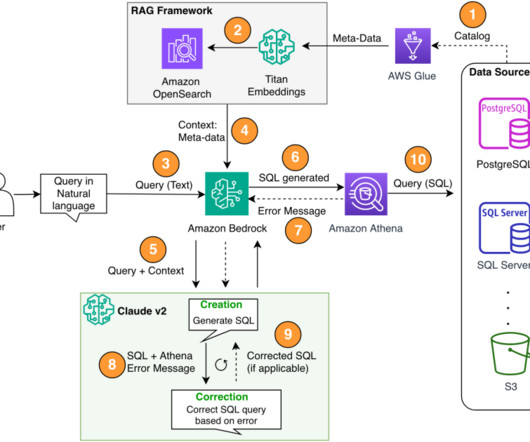
AWS Machine Learning Blog
FEBRUARY 28, 2024
Structured Query Language (SQL) is a complex language that requires an understanding of databases and metadata. Today, generative AI can enable people without SQL knowledge. This generative AI task is called text-to-SQL, which generates SQL queries from natural language processing (NLP) and converts text into semantically correct SQL.
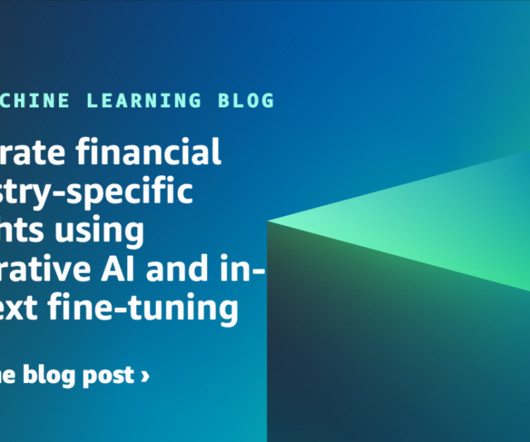
AWS Machine Learning Blog
NOVEMBER 12, 2024
NOTE : Since we used an SQL query engine to query the dataset for this demonstration, the prompts and generated outputs mention SQL below. The question in the preceding example doesn’t require a lot of complex analysis on the data returned from the ETF dataset. A user can ask a business- or industry-related question for ETFs.
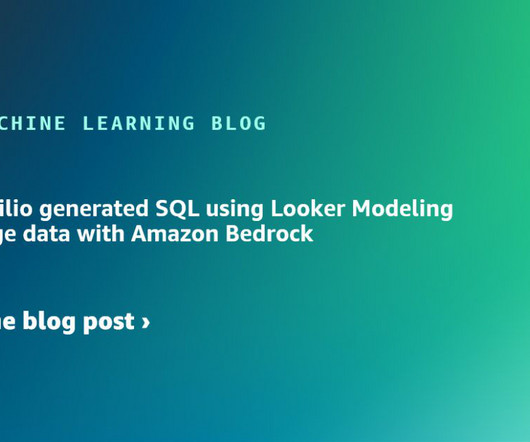
AWS Machine Learning Blog
AUGUST 8, 2024
Managing and retrieving the right information can be complex, especially for data analysts working with large data lakes and complex SQL queries. This tool converts questions from data analysts asked in natural language (such as “Which table contains customer address information?”)

Analytics Vidhya
DECEMBER 26, 2022
NoSQL databases are often used for big data and real-time web applications. Introduction A NoSQL database is a non-relational database that does not use the traditional table-based schema of a relational database. The main advantages of using a NoSQL database are that NoSQL […].

insideBIGDATA
DECEMBER 25, 2023
Juan Sequeda, Principal Scientist at data.world, recently published a research paper, "A Benchmark to Understand the Role of Knowledge Graphs on Large Language Model's Accuracy for Question Answering on Enterprise SQL Databases." He and his co-authors benchmarked LLM accuracy in answering questions over real business data.

Analytics Vidhya
MARCH 13, 2023
It is intended to assist organizations in simplifying the big data and analytics process by providing a consistent experience for data preparation, administration, and discovery. Introduction Microsoft Azure Synapse Analytics is a robust cloud-based analytics solution offered as part of the Azure platform.

Data Science Blog
SEPTEMBER 19, 2023
In the contemporary age of Big Data, Data Warehouse Systems and Data Science Analytics Infrastructures have become an essential component for organizations to store, analyze, and make data-driven decisions. So why using IaC for Cloud Data Infrastructures?
Expert insights. Personalized for you.
We have resent the email to
Are you sure you want to cancel your subscriptions?


Let's personalize your content